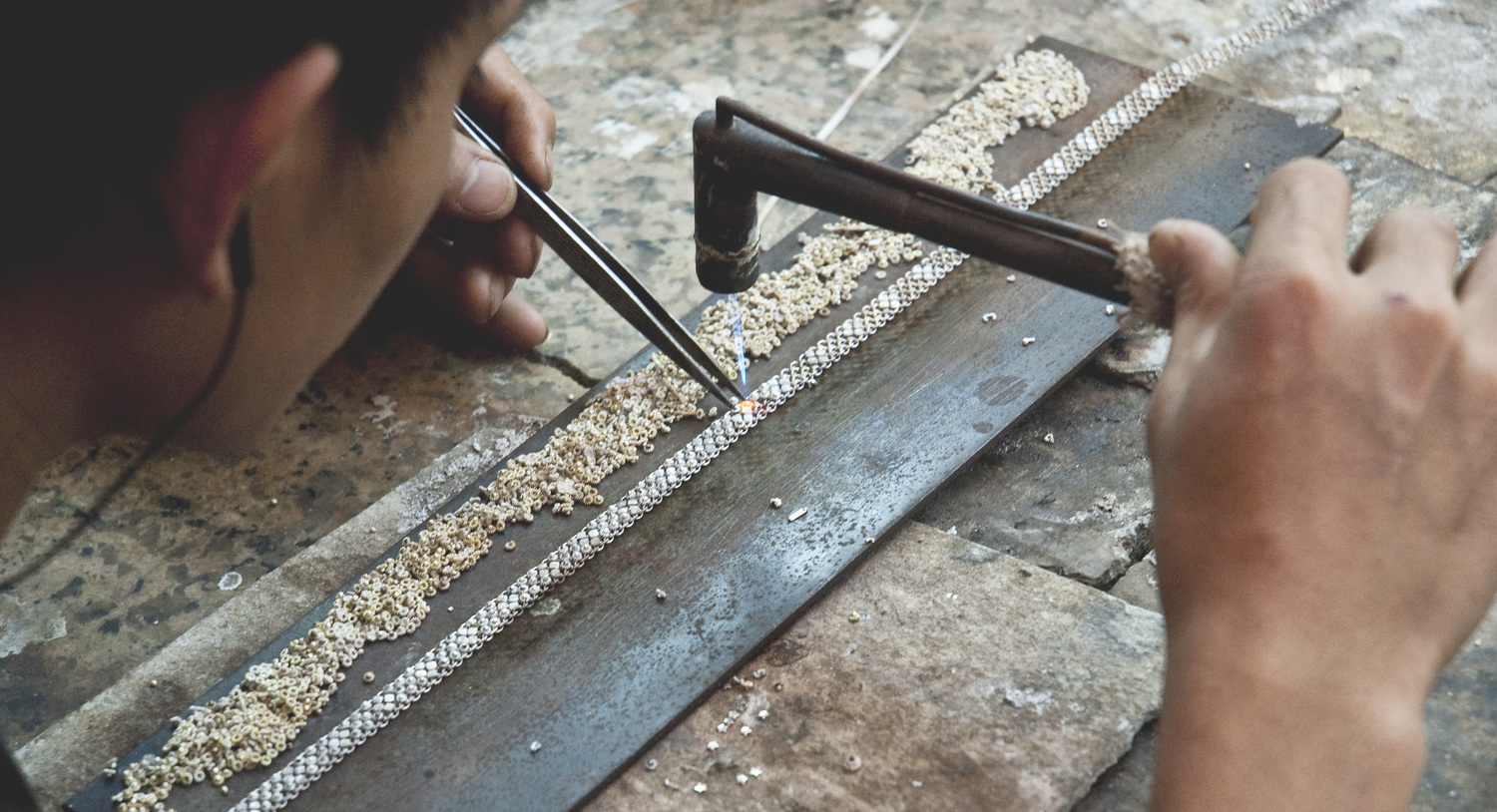“Dok Pi-khune” design - by Shui Meng Ng
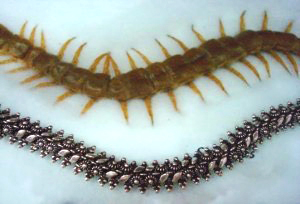
The Mystery Of The Dok Pi-Khune Motif
When I met a well-known silver master in Vientiane, I resolved the mystery of the dok pi-khune motif. As testified by many Lao, the motif originates in Laos, as it is seen in many old photographs and exhibition of jewelry used by royals and courtesans in Luang Prabang. As the wearing of intricately designed silver jewelry was probably only affordable to the high-born, it would not be far-fetched to assume that the first pieces of silver jewelry with the dok pi-khune design were made by Lao silver artisans for the women of the royal household, and later also made for the women of the aristocracy.
According to my silversmith friend, the design was not called dok pi-khune, but traditionally the Lao referred to this kind of design as the ki-khep design. Ki-khep in Lao means centipede, and when a customer in Laos asks for something made in the ki-khep design, the silversmith will make the silver motif which is today called dok pi-khune.
So, when did the term dok pi-khune replace ki-khep? According to my friend, in the mid-1990s when more and more Thai tourists (mostly from Bangkok) started to come to Laos and buy silver jewelry, they kept referring to the ki-khep design as dok pi-khune. This seems to make a lot of sense, since the urban Thai probably considered the name “centipede” unbefitting for such a beautiful and delicate motif. They therefore regularly use the more poetic and refined name of dok pi-khune to refer to the ki-khep design, and soon the people selling silver jewelry also followed suit. However, although the Lao now use the name dok pi-khune to refer to the motif, the “small attachment” at the edge of the dok pi-khune is still called by the Lao ki-khep feet.
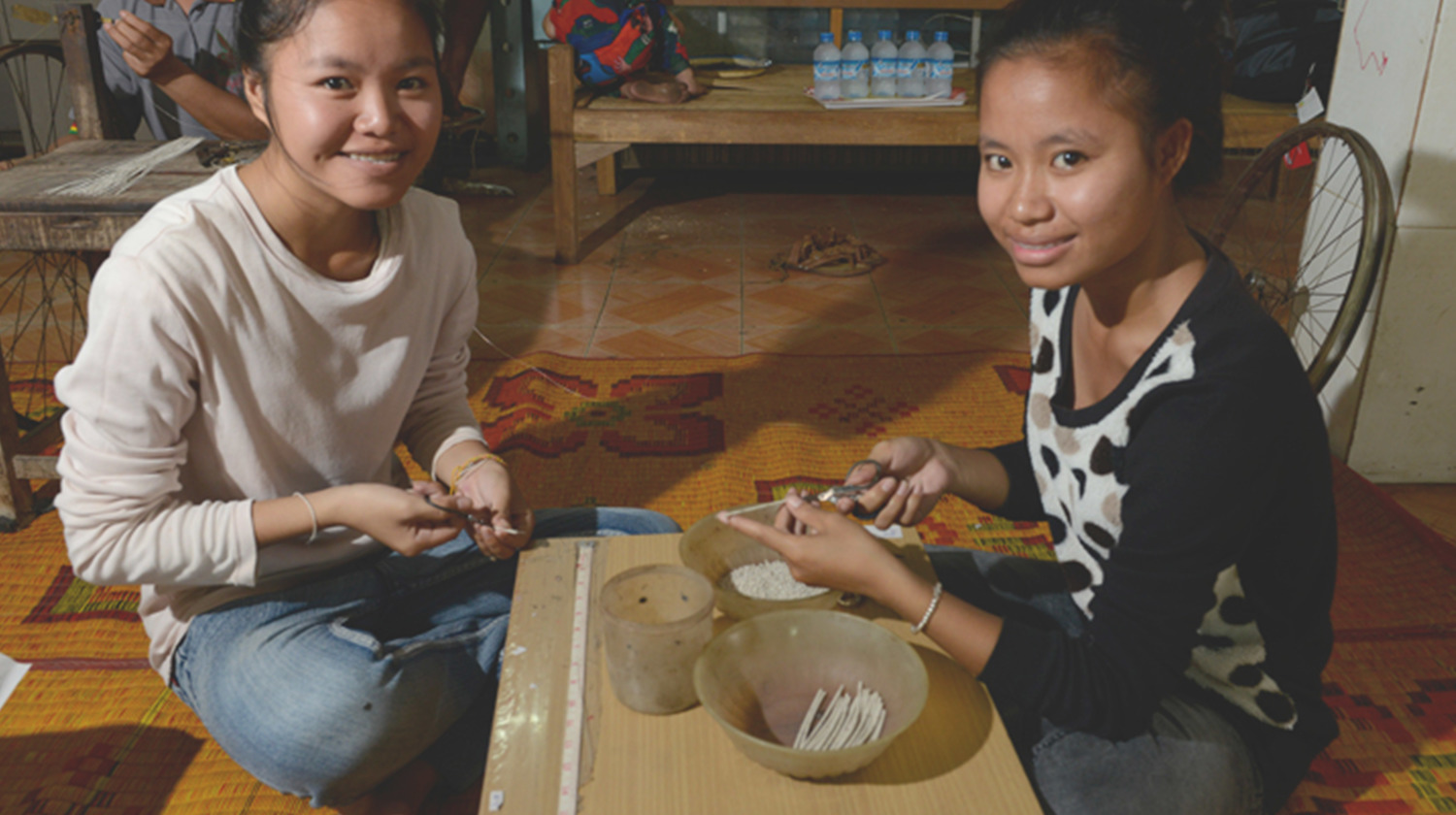


Crafting dok pi-khune – a labor of love
"When I saw for myself the process of making of each dok pi-khune motif, I was truly amazed at how testing and tedious nature of the task. It can be said that each dok pi-khune silver motif is a labor of love. "


1. Smelting the silver
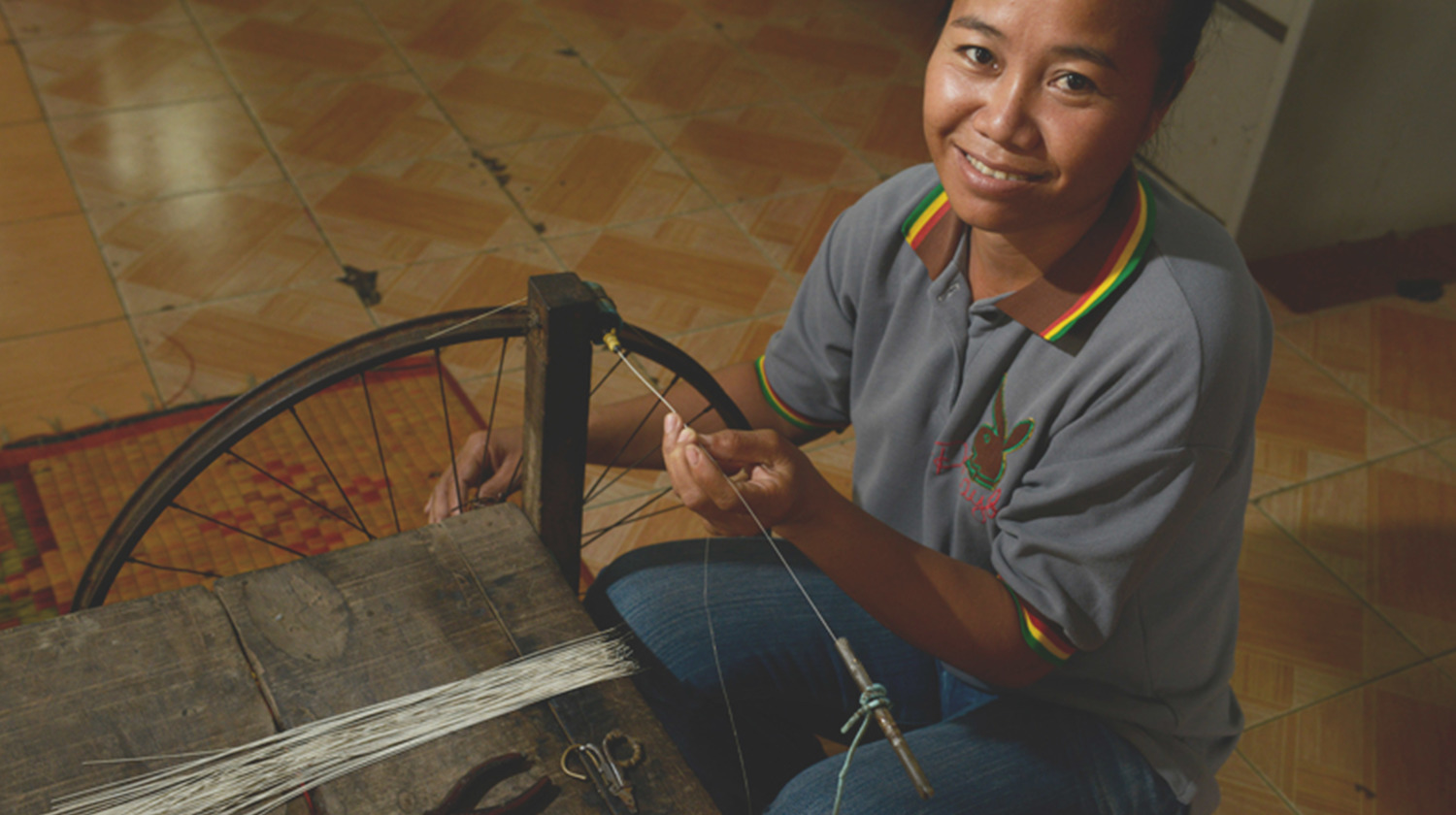

2. Rolling, stretching and pulling the silver into strands
Then the silver is rolled and stretched and pulled into silver strands of different thickness, with the finest silver strand no thicker that a human hair. In the past all this is made by hand, but nowadays, the rolling and stretching of the silver into strands can be made by passing the silver many times through a set of rollers powered either by a foot pedals or electricity. Then the silver is wound into coils and ready to be shaped into the dok pi-khune motif.
Finally the yarn is dyed and woven. In the past–and even today in some remote rural communities–this entire process was often done by a single person. Today, weavers who don’t own mulberry fields usually buy processed silk.



3. Winding the silver strand to form “springs”
In the case of making the dok pi-khune motif, the fine silver strand is wound round a metal or copper rod to form a coil. This has to be done twice to form “springs”. The smaller the desired motif, the finer will be the silver strand; and the finer the silver strand, the smaller will be the diameter of the rod. In the case of the smallest dok pi-khune, the silver strand is as fine as human hair and the rod is the size of a pin.
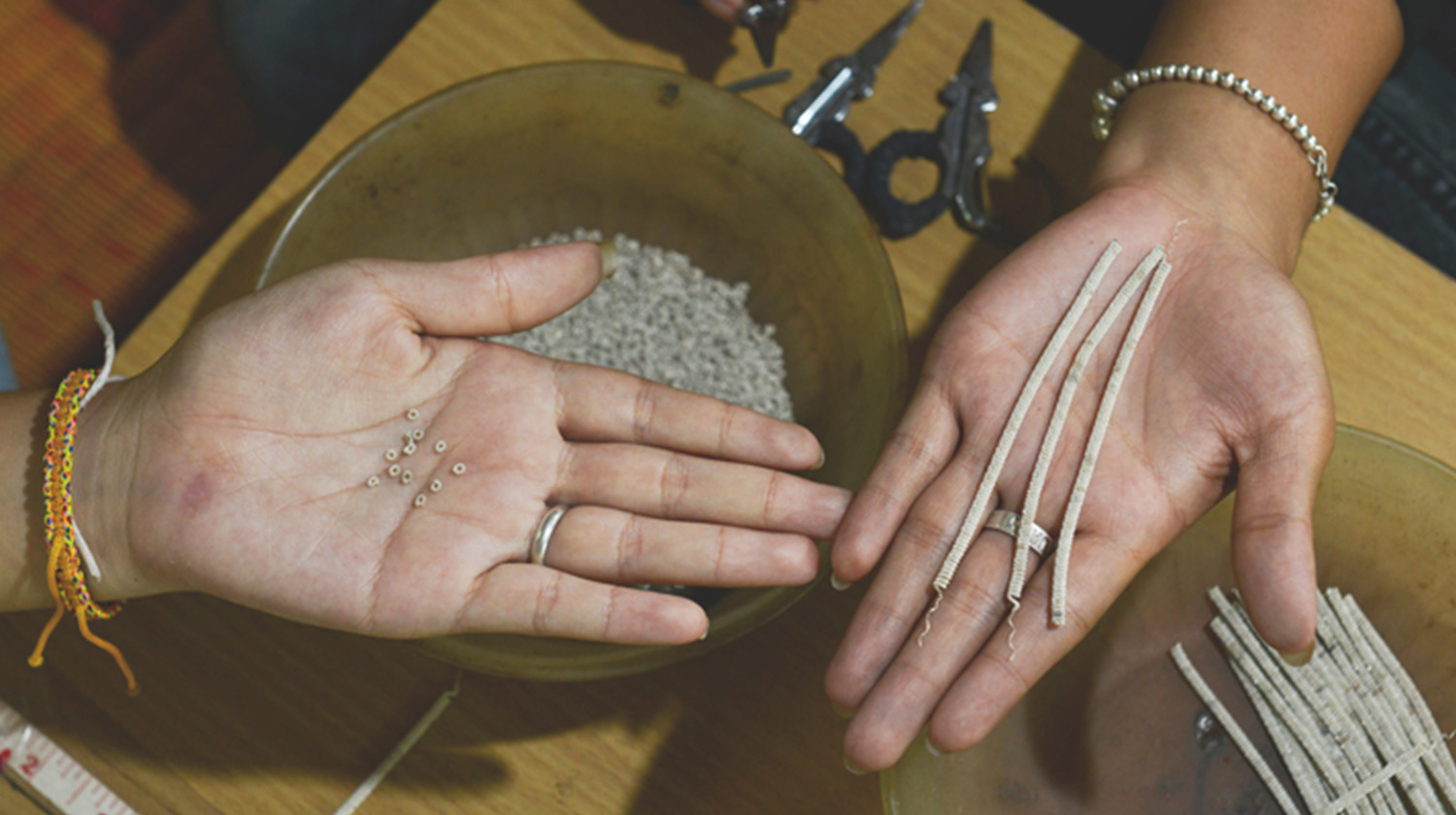

4. Cutting the springs to form “petals”
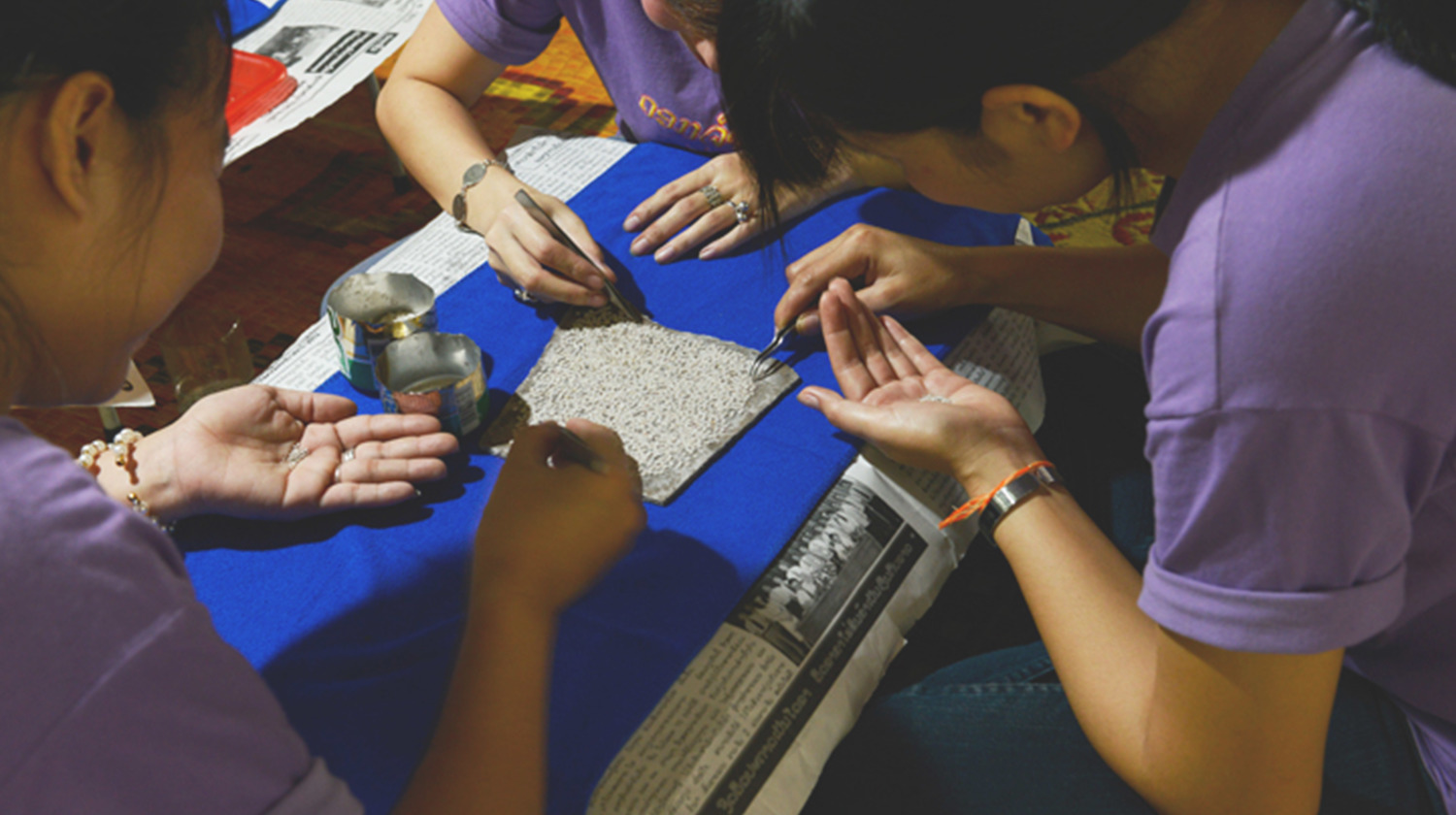

5. Making the “heart” of the dok pi-khune
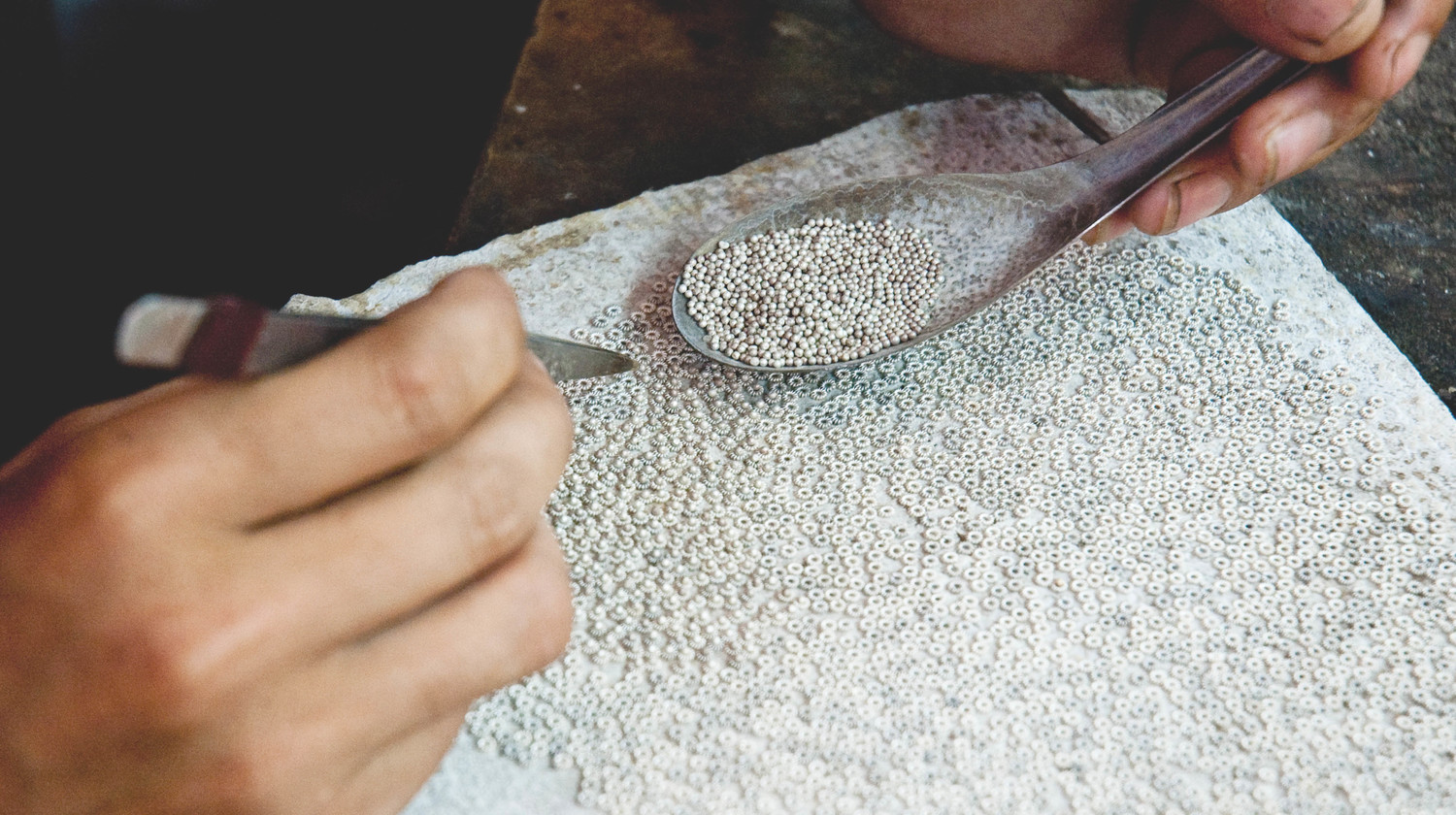

6. Affixing the “hearts” to the “petals”
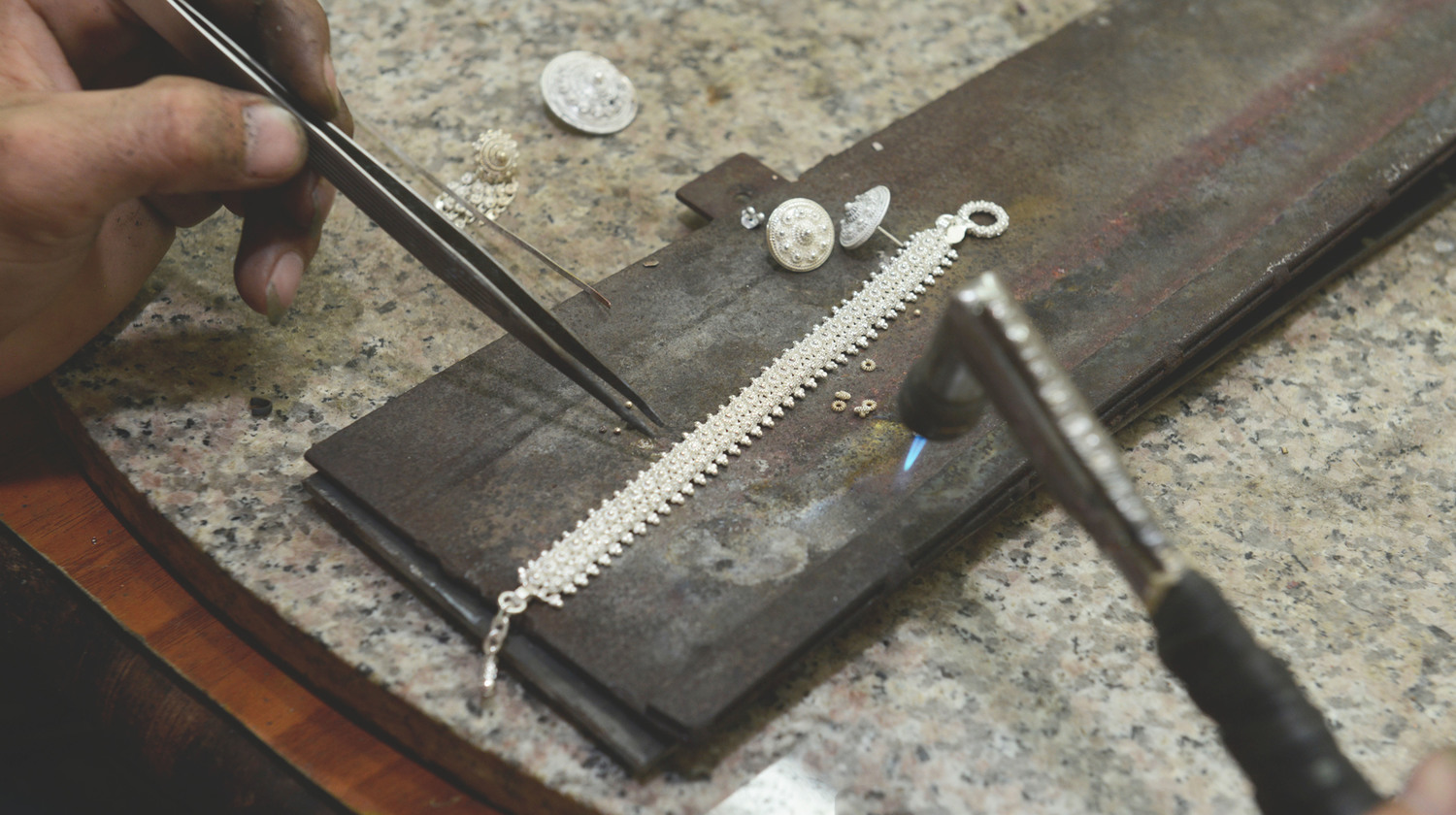

7. Affixing the dok pi-khune to form bracelets, necklaces, or earrings



8. Making ki-khep feet edging
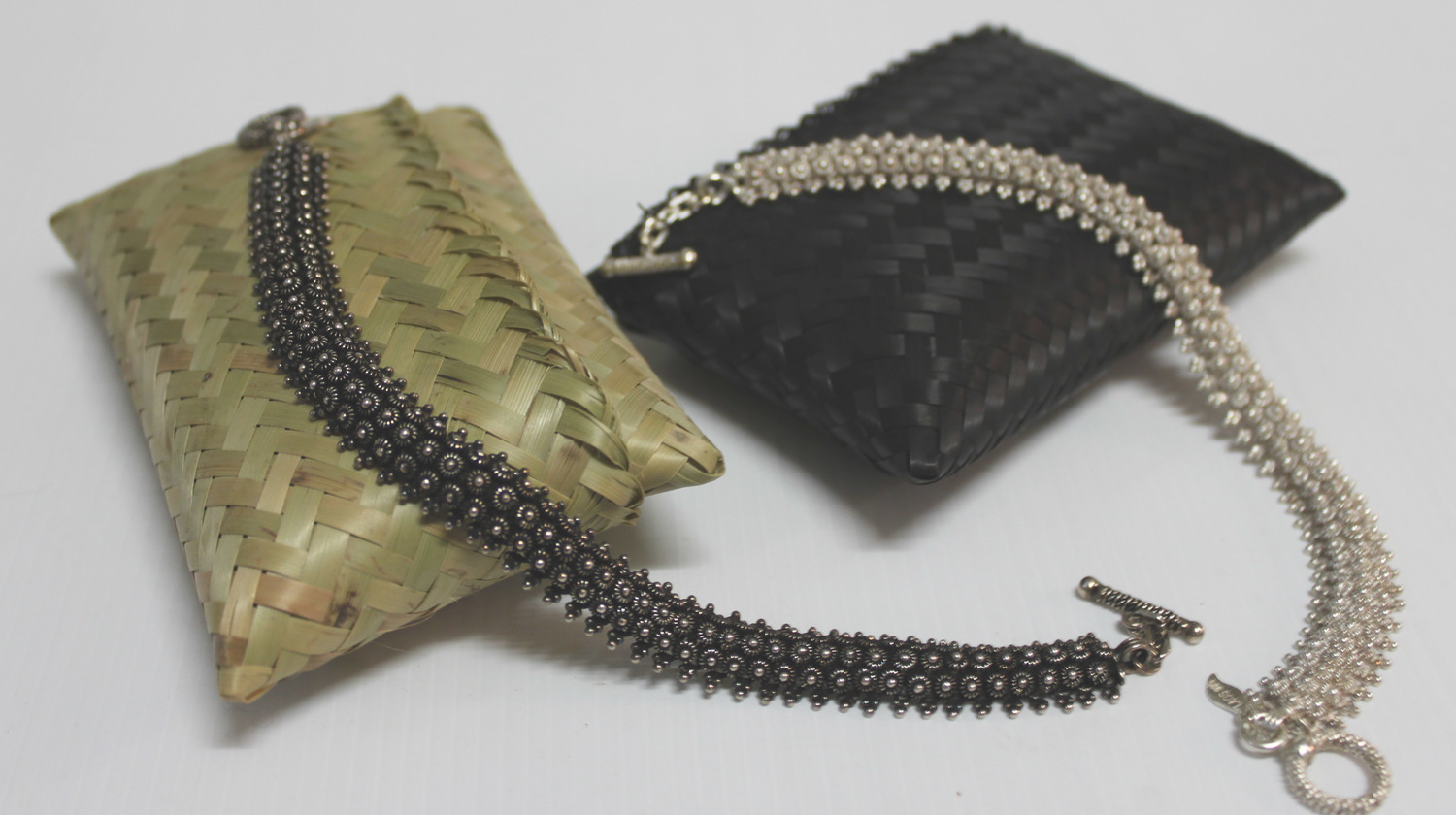

9. Whitening and darkening treatment
Then depending on the taste of customers, the completed dok pi-khune pieces have to receive the final “whitening” or “darkening” treatment by using a special kind of chemical to achieve the desired effect.

